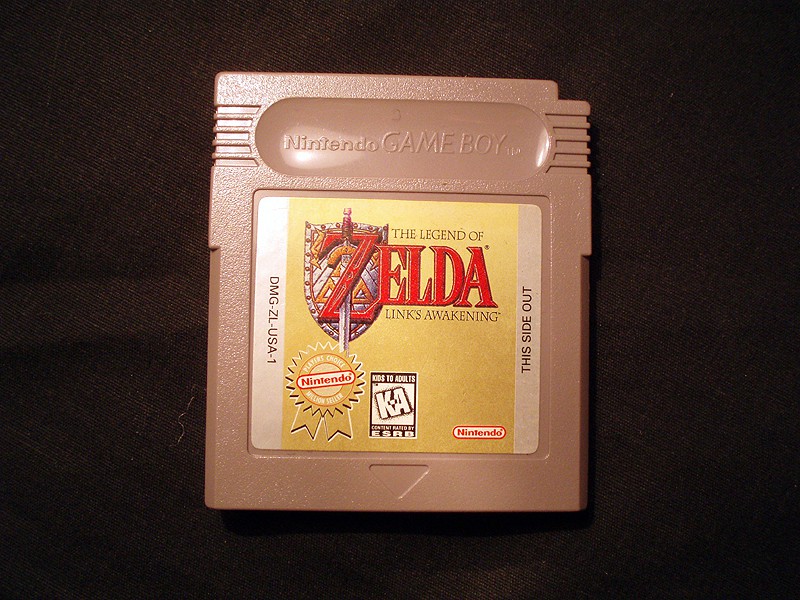The Legend of Zelda series has entranced people for nearly thirty-five years since the original game released on the NES. Last Friday, The Legend of Zelda: Link’s Awakening was released on the Nintendo Switch. A remake of the original 1993 Gameboy game of the same name, this new rendition takes the original concept and recasts it for a new audience and time.
When I saw the news, I was excited but questioned why Nintendo would remake this game. Why take this obscure Zelda title and its strange concept and bring it back today?
Many remakes keep the same art style and update the graphics, but this remake changes the pixel art of the original into a toybox design. Instead of looking like real people, the characters look like handcrafted dolls, bursting with life and charm. This change speaks to one of the key aspects of the original story—that it’s not supposed to be realistic.
Near the end of the original game, players learned that the entire narrative had taken place inside of a dream. Throughout the game, a few oddities suggested that something was out of order. Characters from the Super Mario Brothers world would appear out of nowhere (from the player’s perspective) and the residents of the world treated them as if they had always been there.
What works well with that plot device is that the game did not throw it in at the last second. Instead, the developers leaned into the surreal nature of a dream, ending with a nightmarish final boss that could change shapes and become more fearsome as the battle continued.
The original Link’s Awakening was an important step for the franchise. It marked the first time a Legend of Zelda games was released on a portable console. It also introduced features like jumping and the opportunity to fish, both of which have become standard elements of the games in the following years. All of these proved that the series was viable and could continue to grow.
Such advancements are important and game-makers should take time to revisit them. Whenever we achieve some milestone in our own lives, we should revisit these moments and see what strikes us about the events and go deeper into them.
When making the Spiritual Exercises, a retreatant is prompted to do a repetition of prayer in order to look at how they prayed with a particular story. What was important? What needed a little more time? Where was one’s heart moved? In doing so, the retreatant is able to see more deeply into the experience.
In the world of video games, these sorts of moments are done most authentically by remaking the games themselves. But unlike other remakes, this one seems to get the idea of a repetition down. The essence of the game is the same, but the appearance is better suited for the dreamworld environment therein. A new customizing feature, which enables the player to create bonus levels, speaks to the creativity present in our own dreams and imaginations. Those praying through the Spiritual Exercises are invited to use this creative power in prayer by imagining scenes from Scripture.
Many times, when I am praying with a story, the first time through I get caught up in the plot and the actions taking place that I can miss the emotions Jesus and the people with whom he is interacting. One instance that comes to mind is one time I prayed through the passage in which Jesus learned of the death of John the Baptist (Mt 14:13-21), but only when I revisited this experience with my spiritual director was I able to name that Jesus was in mourning. When I returned to that passage again in prayer, I had a much richer understanding of what he did.
By going back to games like this one and viewing them from a different angle (and at a different time in our lives), we see more of the depth that is present in it. 1 We can more easily come to know the characters and hone in on their emotions which color how we read a scene, amid other tells and cues we might have missed before.
Above all, this new game allows its audience to experience the original story on a deeper level. For those of us who enjoyed the original, we are treated to a richer experience of what came before. For those who are new, the deeper reflection on the source material on the part of the developers will hopefully allow for a vivid experience and understanding of why this game was worth coming back to.
Is it not the same with our faith? Again and again, we return to the life of Jesus. In prayer, we can reimagine the countless ways Jesus speaks and acts in the Gospels. Sacred Scripture contains an endless depth which we are invited to explore. Which story will you revisit today?
—
Image courtesy of flickr user James
- Having revisited Ocarina of Time from so many angles as a teenager, I felt like I knew the world and the characters inside and out, something I would not have been able to do just from gameplay. ↩


